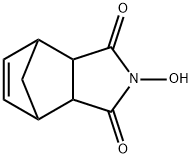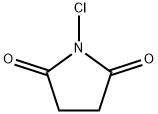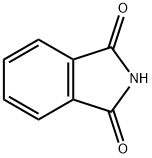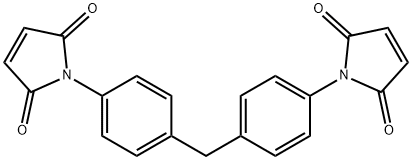N-Hydroxy-5-norbornene-2.3-dicarboxylic imide , 99% , 21715-90-2
Synonym(s):
N-Hydroxybicyclo[2.2.1]hept-5-ene-2,3-dicarboxylic acid imide;HONB
CAS NO.:21715-90-2
Empirical Formula: C9H9NO3
Molecular Weight: 179.17
MDL number: MFCD00167583
EINECS: 244-538-6
| Pack Size | Price | Stock | Quantity |
| 5G | RMB31.20 | In Stock |
|
| 10G | RMB55.20 | In Stock |
|
| 25G | RMB111.20 | In Stock |
|
| 50G | RMB207.20 | In Stock |
|
| 100G | RMB371.20 | In Stock |
|
| 250G | RMB879.20 | In Stock |
|
| 500g | RMB1479.20 | In Stock |
|
| others | Enquire |
PRODUCT Properties
| Melting point: | 165-170 °C (lit.) |
| Boiling point: | 311.69°C (rough estimate) |
| Density | 1.2822 (rough estimate) |
| refractive index | 1.5600 (estimate) |
| storage temp. | Sealed in dry,2-8°C |
| solubility | Soluble in ethanol |
| form | Solid |
| pka | 9.00±0.20(Predicted) |
| color | Off-White |
| BRN | 13540 |
| CAS DataBase Reference | 21715-90-2(CAS DataBase Reference) |
| EPA Substance Registry System | 4,7-Methano-1H-isoindole-1,3(2H)-dione, 3a,4,7,7a-tetrahydro-2-hydroxy- (21715-90-2) |
Description and Uses
N-Hydroxy-5-norbornene-2,3-dicarboximide (NHD) is a compound that has antiviral activity and is used to treat HIV infections. It inhibits the reverse transcriptase enzyme in the virus, which blocks the synthesis of viral DNA. The ferroelectric properties of NHD were first observed by observing changes in its melting point when mixed with water. This property makes it useful for diagnosis purposes. In animal studies, a dose of 5 mg/kg was found to be effective against cancer cells and the drug showed no toxicity in humans at doses up to 500 mg/day. The optimal reaction conditions for NHD are pH 6 and temperature 45 degrees Celsius.
It decreases racemization in peptide synthesis and inhibits formation of N-acylureas.
Safety
| Symbol(GHS) |  GHS07 |
| Signal word | Warning |
| Hazard statements | H315-H319-H335 |
| Precautionary statements | P261-P280a-P304+P340-P305+P351+P338-P405-P501a |
| Hazard Codes | Xi |
| Risk Statements | 36/37/38 |
| Safety Statements | 26-36 |
| WGK Germany | 3 |
| TSCA | Yes |
| HS Code | 29280090 |






